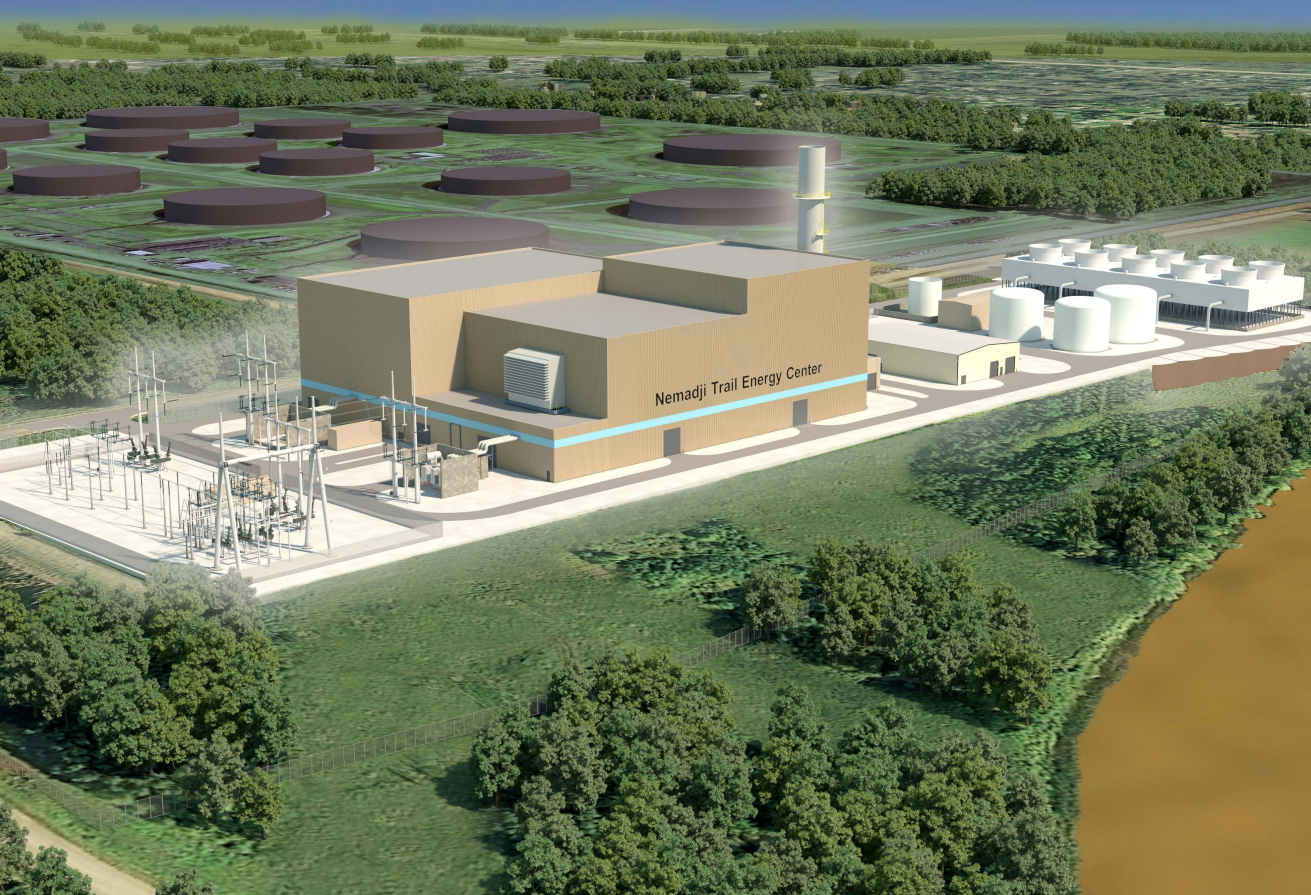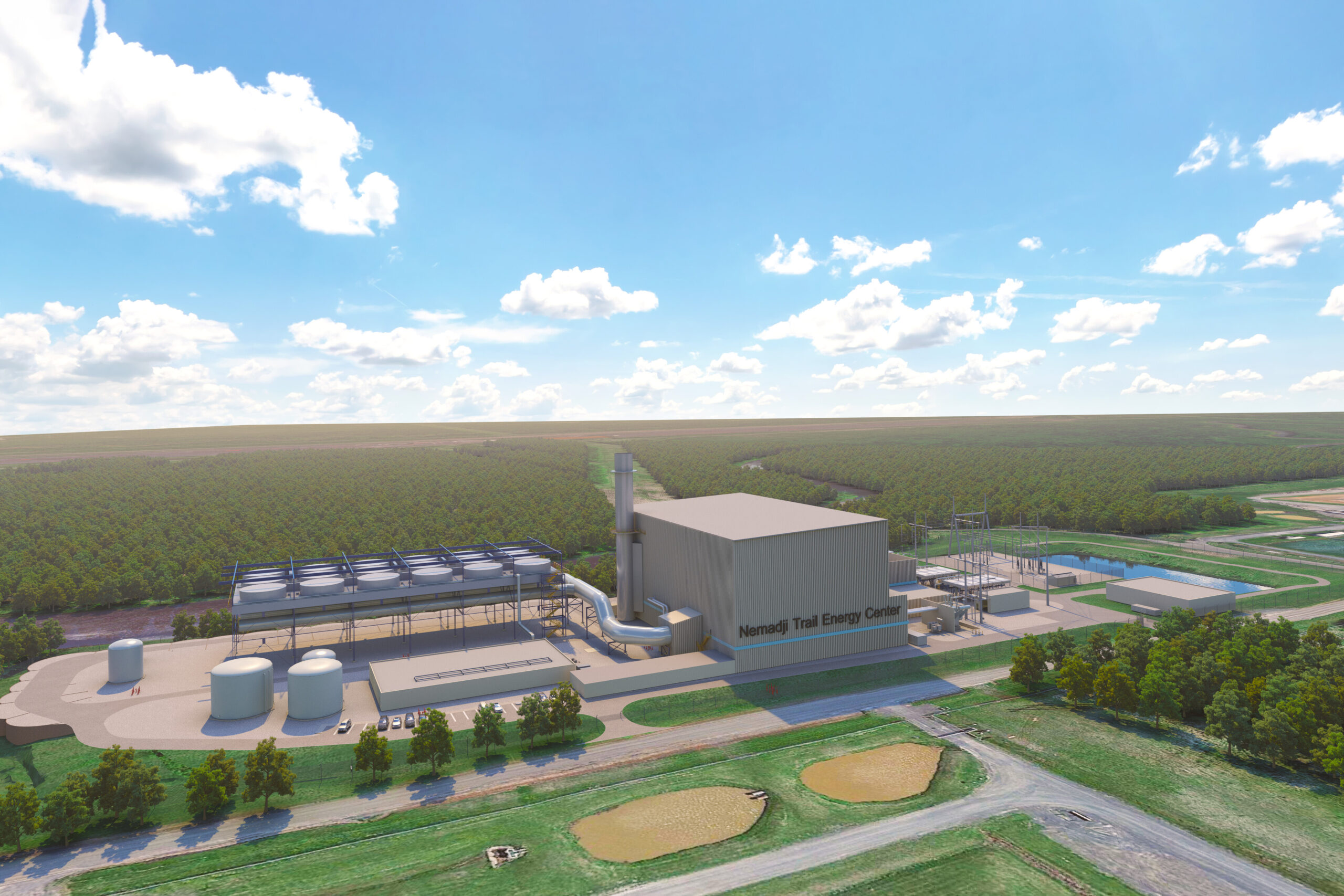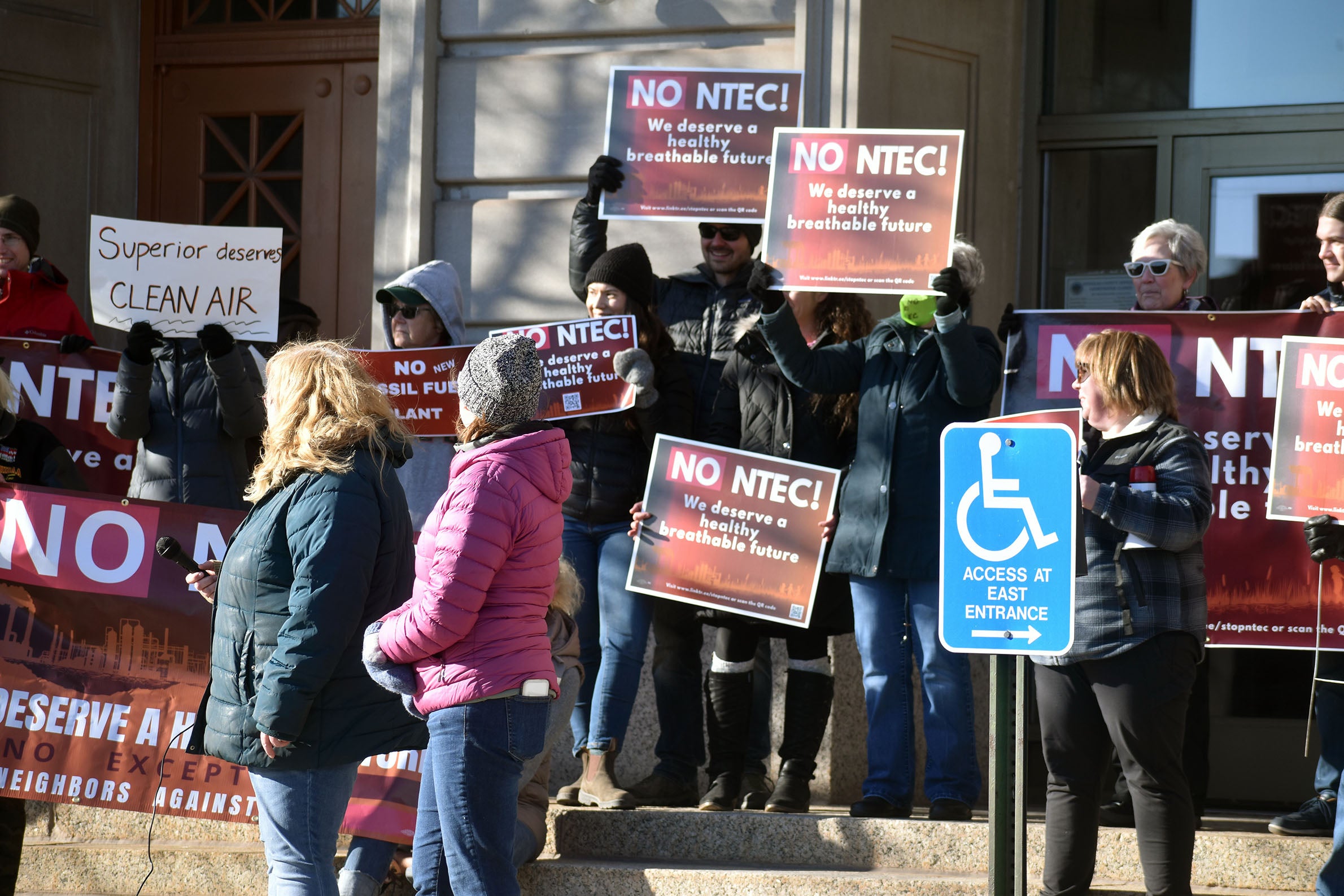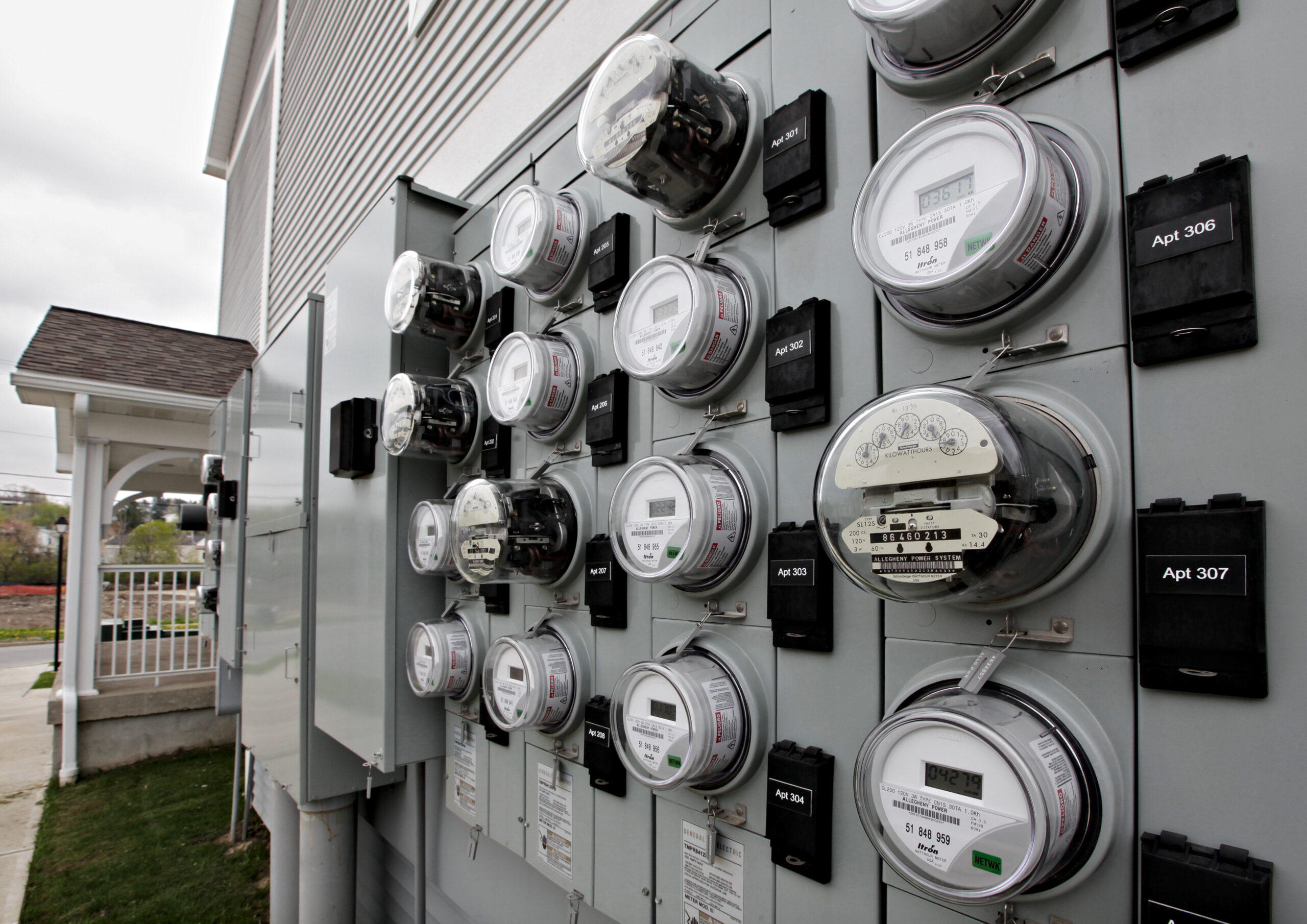Utility providers are proposing to move away from drawing millions of gallons of water daily as part of operating a planned $700 million natural gas plant in Superior.
La Crosse-based Dairyland Power Cooperative and Duluth-based Minnesota Power received approval from the Wisconsin Public Service Commission to build the 625-megawatt Nemadji Trail Energy Center earlier this year.
The project would have included construction of five high-capacity wells about 1 mile from the Nemadji River and pump an average of roughly 3 million gallons daily for cooling of the generating facility.
Stay informed on the latest news
Sign up for WPR’s email newsletter.
Now, the two are asking the Public Service Commission to consider another alternative after hearing concerns about the plant’s water use from residents, regulators and stakeholders, according to Julie Pierce, vice president of strategy and planning for Minnesota Power.
“We identified an air cooling option which eliminates the need for the high-capacity wells and high water usage at the plant,” said Pierce. “And so, it really was a good option and good fit for the site and for the plant.”
Pierce said they’ve asked the Wisconsin Department of Natural Resources to hold off on further work regarding their water use applications. Regulators, environmental groups and the Red Cliff Band of Lake Superior Chippewa had voiced concern that the project would negatively impact water in the area. An aquifer pumping test was submitted last fall on behalf of the utilities found the water supply would support the proposed withdrawals.
Yet, regulators and other experts disagreed.
“I still had concerns that the aquifer was going to be as productive as they needed it to be to supply that amount of water,” said Ian Anderson, a DNR hydrogeologist.
Opponents of the project said they’re glad the utilities are giving the issue serious consideration, according to Matt Earley, Wisconsin representative for Sierra Club’s Beyond Coal Campaign.
“We’re glad that they recognize the catastrophic effects that their plans could have for Superior’s water,” said Earley. “It doesn’t take away from the overall point that the plant is not needed and would be just another dirty fossil fuel plant.”
Earley said they believe the gas plant would become a stranded asset, meaning customers would continue paying for the plant even if it loses revenue. Environmental groups argue now isn’t the time to invest in a natural gas facility when Gov. Tony Evers has set a goal for the state’s utilities to become carbon neutral by 2050 in effort to reduce emissions and the worst effects of climate change. Katie Nekola, a staff attorney with Clean Wisconsin, said the design change should trigger a thorough examination of any new environmental impacts.
Officials with Dairyland and Minnesota Power have said they’re building the natural gas facility to supplement power when it can’t be drawn from renewable energy sources like wind and solar.
Sierra Club and Clean Wisconsin have filed a lawsuit in February seeking review of state regulators’ decision to approve the natural gas power plant. Both groups declined to comment further on the proposed redesign until more details are released. Minnesota Power and Dairyland Power expect to provide the Public Service Commission with more information later this month.
Minnesota Power has set a goal to provide 50 percent of its energy from renewable sources by 2021. Dairyland has been working toward roughly 25 percent renewable energy by 2025. The cooperative also recently committed to shutting down its coal-fired power plant in Genoa by late next year.
The reduction of water consumption through their proposed air cooling design alternative would further diminish the plant’s environmental impacts, according to Katie Thomson, corporation communications supervisor for Dairyland Power.
“It is a proven technology used by utilities in other industries. It does eliminate the use of water for cooling the plant and also has other positive benefits, such as erosion control,” said Thomson.
She said the proposed change would have “minimal financial impact” and savings over the life of the plant are expected to further reduce any costs. The utilities say they don’t anticipate any impacts or changes to permitting and construction so far due to the ongoing coronavirus pandemic. Thomson said she expects the project to obtain all necessary permits by the middle of next year.
The plant is projected to create 260 construction jobs and create a $1 billion investment over the next 20 years. Pending permit approvals and legal challenges, the facility is slated to be in service by 2025.
Wisconsin Public Radio, © Copyright 2025, Board of Regents of the University of Wisconsin System and Wisconsin Educational Communications Board.




